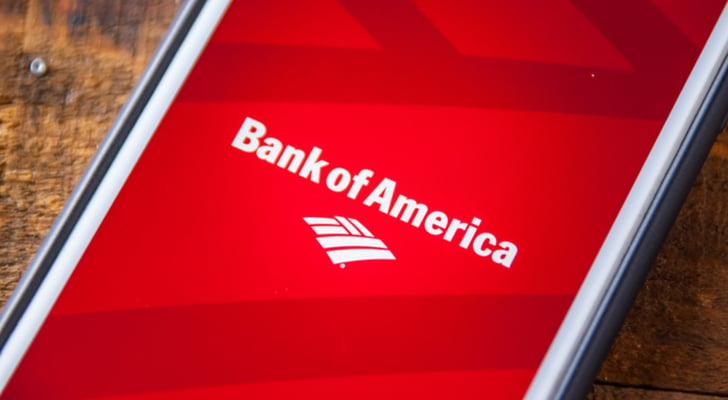Money-center banking giant Bank of America Corp (NYSE:BAC) recently reported full year profits that, after literally a tumultuous decade for BAC stock, demonstrated it is finally returning to business as usual.

At its most recent investor day presentation, Bank of America detailed that since 2010 it had taken $90 billion in net charge-offs and paid close to $40 billion in litigation expenses. This followed several years of fighting for survival.
Much of the volatility was related to the BofA’s role in the financial crisis, including the purchase of brokerage firm Merrill Lynch to save it from oblivion. And, historically low interest rates have made it difficult to grow profits in recent years.
For all of 2016, Bank of America reported earnings that were only exceeded by the bottom-line profit it reported back in 2007 — just as the credit crisis was starting to rear its ugly head. For all of last year, earnings per share were $1.50 per share for a return on equity (ROE) of 6.2%, based on book value for BAC stock of just over $24 per share.
More Certain Value
During its earnings conference call, management detailed that BAC stock’s tangible book value — book value stripping out goodwill and other intangible assets, leaving the tangible ones with a more certain value — was nearly $17 per share. The end-of-year return on tangible equity was only about 9%.
BofA has a long-term goal to boost return on tangible book value to 12%. An analyst on the latest conference call estimated the bank’s rivals currently report a figure closer to 13%. If Bank of America can get close to its goals, it could eventually report close to $3 in earnings per share.
Distilling the above, it’s fair to say that Bank of America is still lagging its peers in terms of wringing out profitability from its seemingly unwieldy banking reach. But, quite admirably, it has come a long way to get its operations back to fighting form.
Analysts expect Bank of America to report $1.73 in earnings for all of 2017 and $2.09 for all of 2018. So, its goal of boosting returns is at least three years off. Profits have steadily improved over the past few years, but BAC stock has soared only recently. Since June, the stock has now more than doubled to a current $25.55 per share. It is up nearly 15% just this year alone.
The question for investors is where BAC stock is likely to head. The forward P/E is still reasonable at only 15, which is below the forward market multiple of nearly 20.
Better Banks Available
There are definitely better-run banks for investors to consider.
Despite an unfortunate and severe hit to its reputation following the discovery of its sales reps opening fake accounts for clients to boost their commissions, Wells Fargo & Co (NYSE:WFC) trades at a lower forward P/E and consistently reports a double-digit return on equity. Last year, return on equity was 11.8%, and should stay right at that level for the current year.
Regional giant U.S. Bancorp (NYSE:USB) has been showing return on equity of around 14% in recent years. It trades at a forward P/E of 15.9, which is also reasonable given its stellar shareholder returns. JPMorgan Chase & Co. (NYSE:JPM) has similar metrics, with a lower P/E than Bank of America but higher return on equity.
Bank of America can be lumped in with second-tier banks with potential, primarily because it posts returns that lag the industry leaders. The bona fide leaders include Wells and U.S. Bancorp. Citigroup Inc (NYSE:C) is in Bank of America’s class and sports a forward P/E of under 12. Its return on equity is quite depressed at less than 7. It could report earnings close to $8 per share if it could boost its returns closer to industry averages.
Bottom Line on BAC Stock
Given the meteoric run in Bank of America shares in less than a year, I would be inclined to take the profits and look for greener pastures elsewhere.
Sticking with the larger banks, I would be more inclined to invest in Citigroup as a value play. Wells Fargo remains a best-in-breed bank and has a valuation that is arguably depressed given the fallout from it sales scandal.
That being said, large banks are likely to remain appealing investments going forward. Interest rates are probably going to rise gradually, and this increases the spread that banks can make between borrowing from depositors and lending to individuals and businesses. BAC’s net interest yield ended the year at 2.23%, well below Wells Fargo’s 2.87%.
As of this writing, Ryan Fuhrmann was long shares of Wells Fargo but did not hold a position in any of the other aforementioned securities.
